More than a hundred Global 6000s — Bombardier’s third-generation long-haul business jets are already flying around the world in the interests of their owners, who praise them for speed, comfort and reliability. Flights of up to 10 hours run at a speed of 0.85M: ideal if you need to quickly get from Shannon to Seattle, from Sao Paulo to Lisbon. No less popular use of this aircraft is 12-hour flights at a speed of 0.82M from London to Los Angeles, from Tokyo to Delhi or from Miami to Moscow. Of course, this is not a record range, there are more long-range business jets.
But the Global 6000 is the epitome of comfort for passengers. After the Gulfstream G650 (many people call it the superjet), the Global 6000 has the largest interior. In the three compartments fit 12–16 pass. In most aircrafts of this type, the cabin configuration assumes a club section of four seats in the front, in the central - four seats in the conference layout, and in the back - a room with a three-seat sofa and three seats facing each other at the opposite side.

Most jets are also equipped with a kitchen unit in front of the cabin, a lounge chair for crew members (not a certified resting place), and a separate crew toilet. The second - passenger - toilet is located in the tail section, it has a pair of portholes. There is also access to the luggage compartment. The flexible design of the Global 6000 wing is inherited from the original Global Express model, thanks to which passengers can enjoy a smooth flight even in turbulent conditions.
Another strength of the aircraft is improved (compared to its predecessor - Global XRS) soundproofing and sealing the cabin. The salon really turned out to be one of the quietest in the industry, and the pressure in it at FL450 corresponds to an altitude of 1400 meters above sea level. Most of the operators reported that they rarely rise above the FL470, so a comfortable flight for passengers is provided.
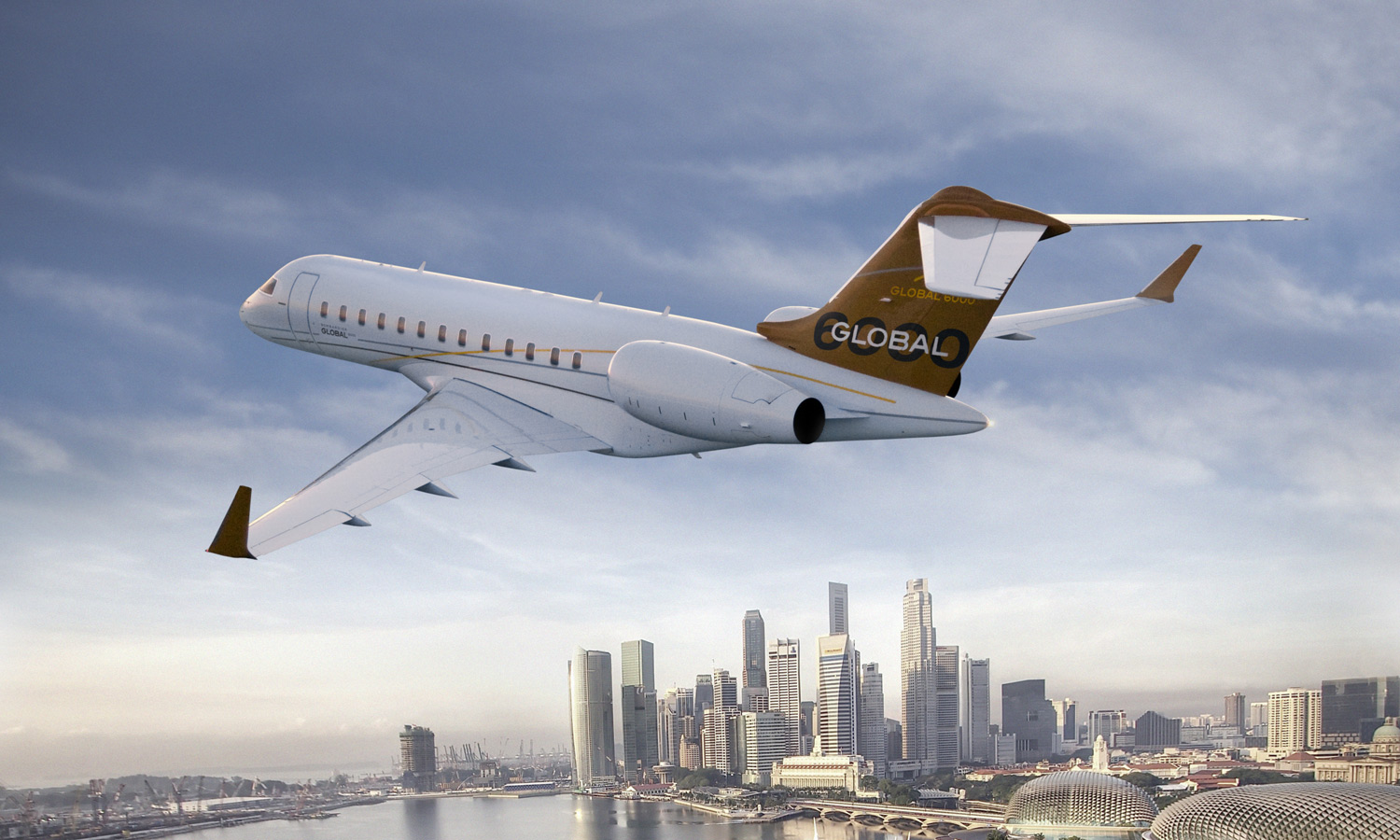
But the most likely significant improvement over the XRS was the Bombardier Vision brand digital aircraft, based on the Rockwell Collins Pro Line Fusion avionics. Unlike the Honeywell Primus 2000 complex installed on the Global Express and Global XRS, the avionics on the Global 6000 meet all requirements (both current and future) of the air traffic management system, including calls for the required navigation performance (RNP) and coursework beacons (LPV), automatic data transmission between crew and dispatcher (CPDLC), automatic dependent surveillance (ADS-B). On the dashboard, four 15-inch horizontal displays are arranged in the shape of a T. Synthetic vision system, full-featured FMS, MultiScan meteo-radar, inertial systems (IRS), TAWS early warning system, dual-channel autopilot, automatic traction machines - all this is on the list of standard equipment. The Rockwell Collins HGS-6000 system with EVS and SVS functions, as well as the pilot's electronic portfolio (EFB, Class II) are offered as options. Many functions were not available at the time of certification and commissioning. Use the full potential of avionics allowed later issued by the manufacturer service bulletins. Each next version of the software increases the capabilities and reduces the load of the crew, and also reduces the minima.
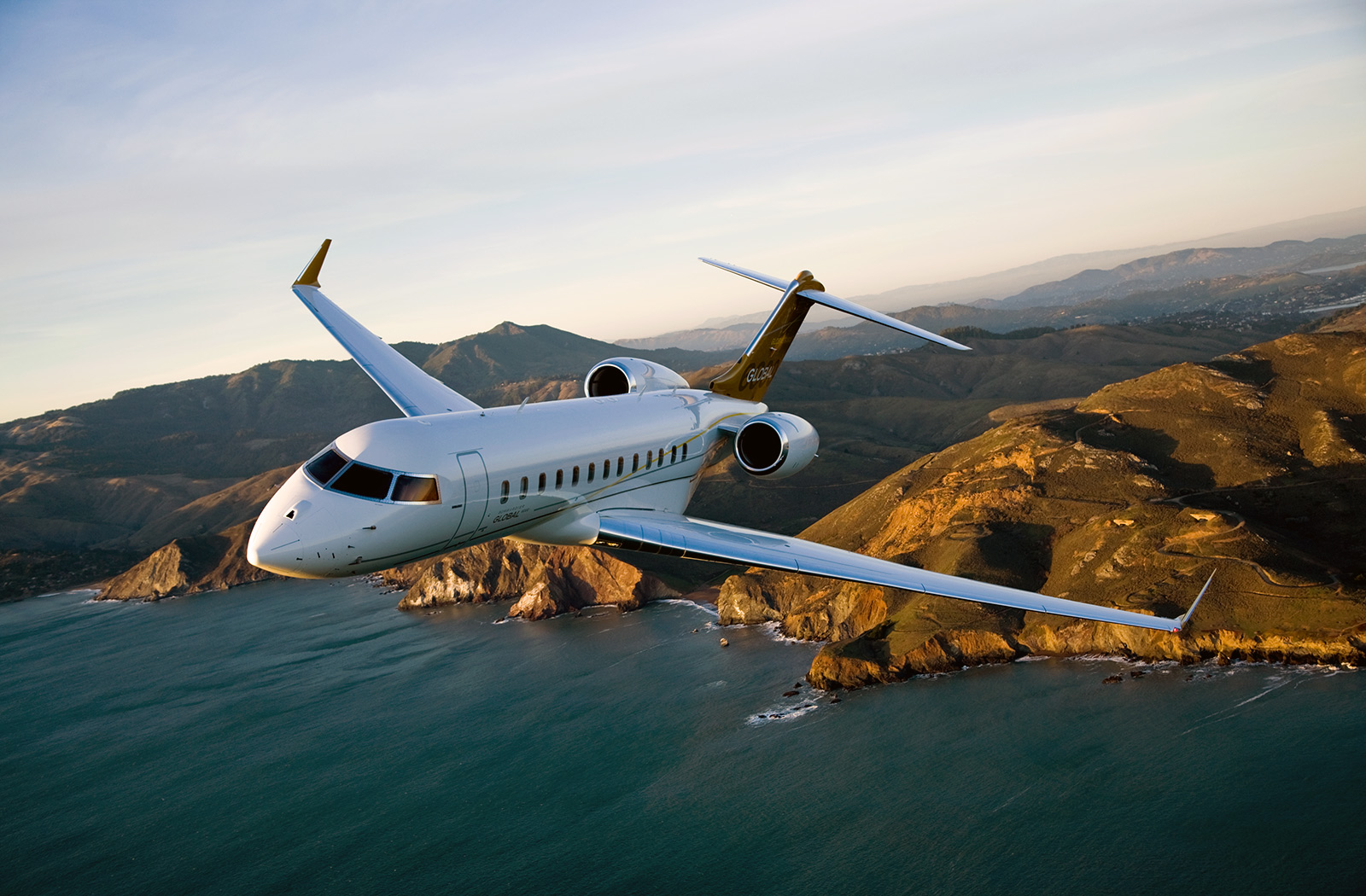
Our survey found that operators who chose the Global 6000 over competing models focused primarily on cabin dimensions, takeoff and landing performance and speed. Many noted that they were eyeing the Gulfstream G650, but at that time, for one reason or another, it was not possible to purchase it. Many said that they were completely satisfied with the operating experience of the Global Express, Global XRS and other Bombardier business jets and reasoned that the Global 6000 is quite a mature product, which means it will be reliable.
Half of the Global 6000 fleet is operated in North America, the lion’s share is registered in the United States. NetJets has at least six aircraft of this type. According to the FAA, large American corporations, including Aetna, Caterpillar and CitiGroup, as well as Limited Brands, McDonald’s and Texas Instruments, use the Global 6000 as a corporate vehicle. Lisbon-based NetJets Europe operates four such aircraft, the VistaJet registered in Malta — six more, in addition to five Global 5000 and two Global XRS. A dozen of this type of aircraft is listed in the register on Fr. Maine, their owners are not identifiable. Four aircraft registered in Austria, three - in Switzerland, two - in France and Denmark, and one each in Finland, Ireland and Turkey. In the Asia-Pacific region, three Armed Forces are located in China, one each in India, Malaysia, and Hong Kong. Several cars are registered in the Cayman Islands, two are based in Sao Paulo, a couple more in South Africa.

With full tanks (1270 kg of fuel), the plane takes 14 passengers. and can fly at least 6100 nautical miles (11,300 km), not counting the emergency balance. But these calculations are based on the Bombardier’s indicated weight of an empty, equipped aircraft of 23,700 kg, despite the fact that none of the operators we surveyed boasted that his aircraft fit into this framework. The lightest mass-produced airplanes weigh about 23.8 tons, the weight of the heaviest exceeds 24 tons, leaving room for 8–9 passengers, with full tanks. The rest fit somewhere between these two marks, so they can take 11–12 passes. However, more than six passengers on board on long-haul flights are rare, since it is such a number that fits on the chairs that lie in beds. It happens that there are 12 passengers on board at once, but this is on flights that rarely exceed 4–5 hours.
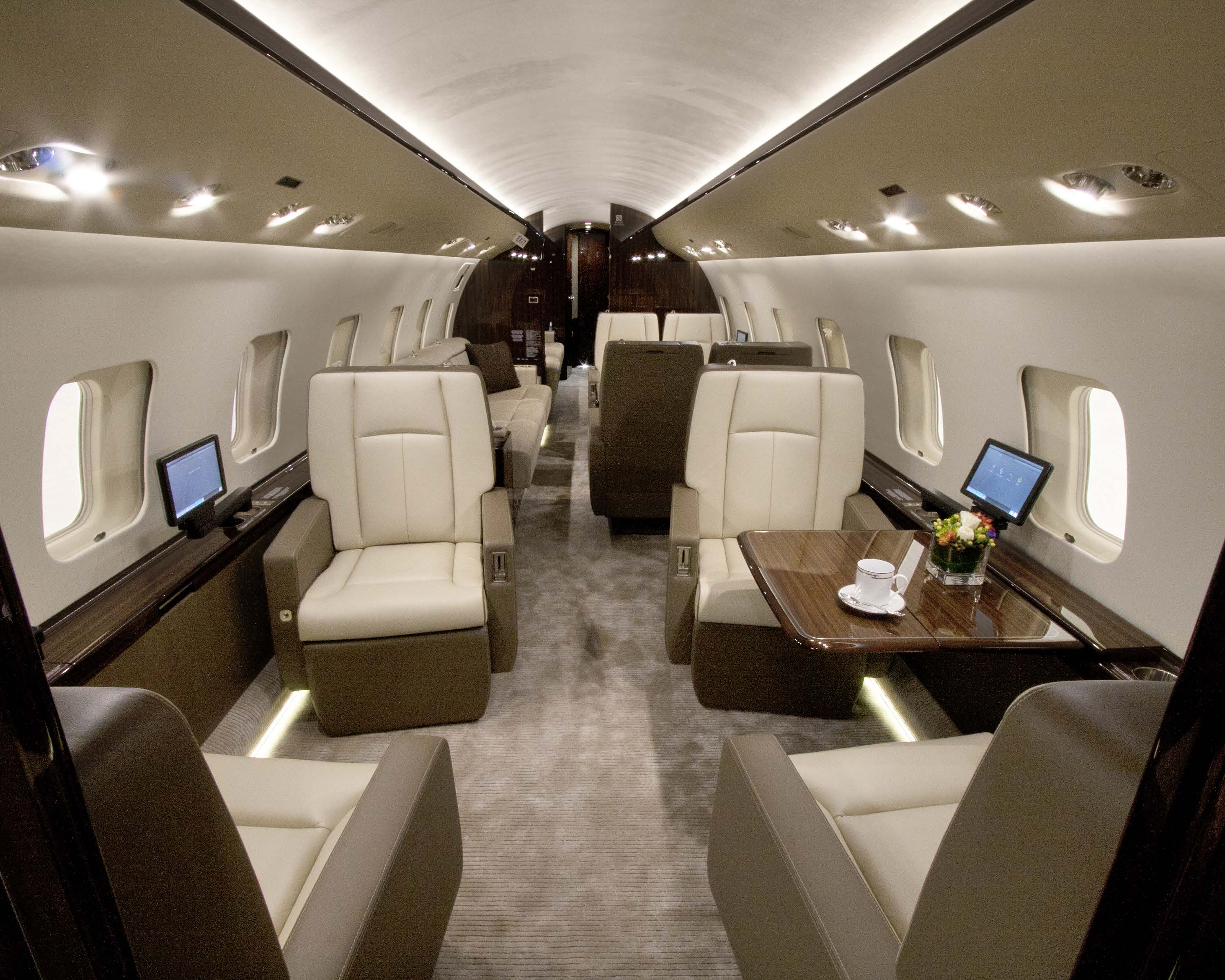
Most of the operators reported that jets fly from 450 to 600 hours per year. But this is rather a matter of corporate traffic, since in charter or equity operator fleets a plane reaches 100 hours a month. The average flight duration is 3.5–4.5 hours, that is, from 2500 to 4000 km. However, the flight length of 6500–7500 km is not uncommon. The most distant of the directions indicated by the respondents did not exceed 10,750 km. That is, again theoretically, the plane can fly another 500, or even 700 km.

Standardly, with the possibility of stepless dialing, the aircraft is taken immediately to the flight level (FL450 plus or minus 100–200 feet) and then flies at a cruising speed of 0.83–0.85M, which corresponds to 476–488 knots of the true airspeed under ISA conditions. For longer flights, approximately 2300 kg are calculated for the first hour, 1800 kg for the second hour, 1360 kg for the third hour and approximately 1130 kg for the last one. Cruising speed at FL410 is 0.82–0.83M.
Five causes of love and dissatisfaction
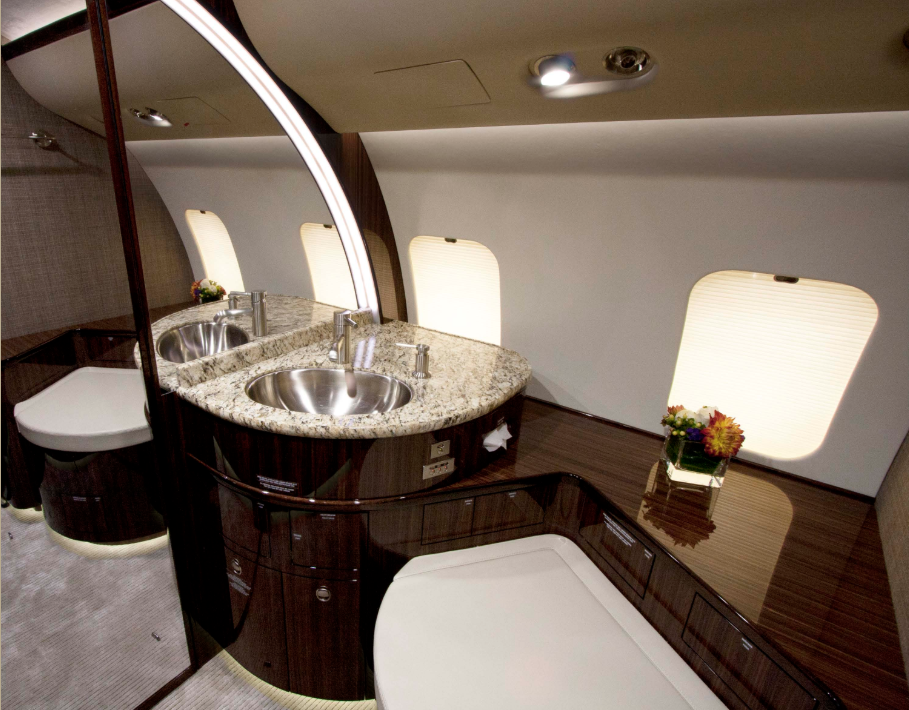
As part of the survey, we ask aircraft operators to name the five most favorite features and five points that leave much to be desired. Comfortable lounge easily came out on top in the list of "five reasons for the love" of operators to the Global 6000. Cabin length - 14.6 m; this includes the onboard kitchen, crew rest area, passenger sections, rear toilet and luggage compartment available during the flight. Floor area - 31 m2, cabin volume - 60.6 m3. In cross section of the cabin, the Global 6000 is second only to the G650. 28 windows in the cabin create an impression rather of a corporate airliner than a business jet.
In each of the three passenger compartments, there are three windows on each side. There are two portholes in the toilet. The generous width of the cabin allows you to place wider seats than most long-range business jets. Therefore, there is enough space for passengers at all levels.
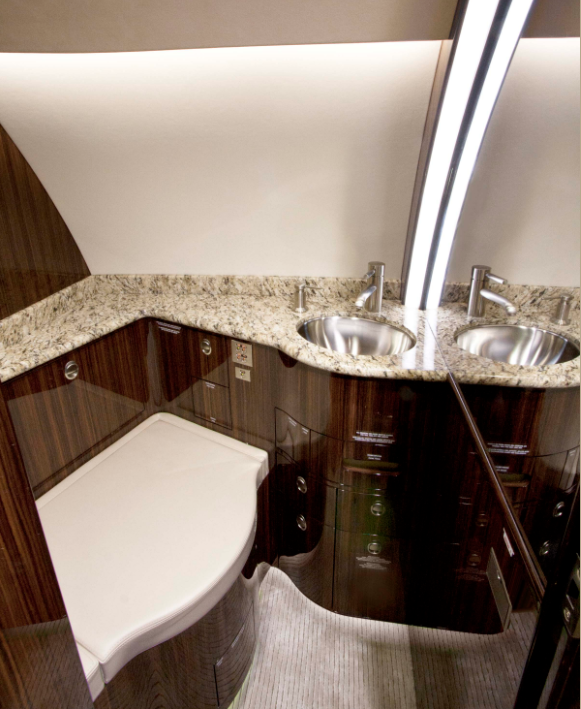
The second "reason for love" - ??takeoff and landing characteristics. For example, the plane takes off from the runway with a length of 1000 m (airfield at sea level) and departs a flight of 2,000 nautical miles (3,700 km). Take-off characteristics in conditions of elevation and hot climate are improved due to wing mechanization (slats and flaps). The Global 6000 can take off from Tuluk airport to Mexico City at an air temperature of ISA + 25C and fly to Madrid. From Johannesburg under the same conditions you can fly to any destination in Europe. One of the unconditional advantages of the aircraft is an excellent compromise between the payload and the range, in this parameter the Global 6000 has no equal among business jets. In a typical configuration, he (with full tanks) takes on board 11-12 people. Duplication of systems, automation and reliability took one of the first lines in the list of advantages of this aircraft. According to the operators, the technical readiness ratio for departure of this model is not lower than that of the leading representatives of the large-cabin class. Systems fail so rarely that a couple of years ago, Bombardier launched a program to double the test intervals. A-check forms are now performed with an interval of 750 hours, the intervals between C-check have increased from 15 months to 30. In addition, the manufacturer has tried to eliminate as many tasks as planned and unscheduled. Some planned work, such as component replacement and lubrication, remained unchanged, but this is a relatively small and least labor-intensive proportion of the total MRO. There are new requirements for inspection of reverse seals and replacement of air intake thermostat filters. In general, according to Bombardier calculations, extended intervals over 20 years of operation will save up to 1,250 standard hours, which translates into a reduction in direct operating costs by $ 20 per flight hour and has a positive effect on the level of technical readiness for departure.

The most laudable reviews deserved onboard complex Vision; some respondents - and among them even the operators of the G650 - described it as the best in this class of aircraft. According to them, the graphical interface simplifies system programming at each stage of flight. However, there was one respondent, the chief pilot, who reasonably noted that the system does not provide direct benefits to passengers. What really puzzled the respondents was the need to name five negative points.
The wayward control system of cabin parameters Rockwell Collins was mentioned more often than others. Ten software upgrades have eliminated the most serious problems, but operators still report that it takes at least ten minutes to load the system. On those planes where Lufthansa Technik installed its proprietary cabin parameters control system, no complaints arise. And Bombardier and Rockwell Collins continue to work on the bugs. All aircraft are equipped with satellite communication systems Inmarsat and Viasat (Ku-band), local communication systems (LAN). Most have Wi-Fi.
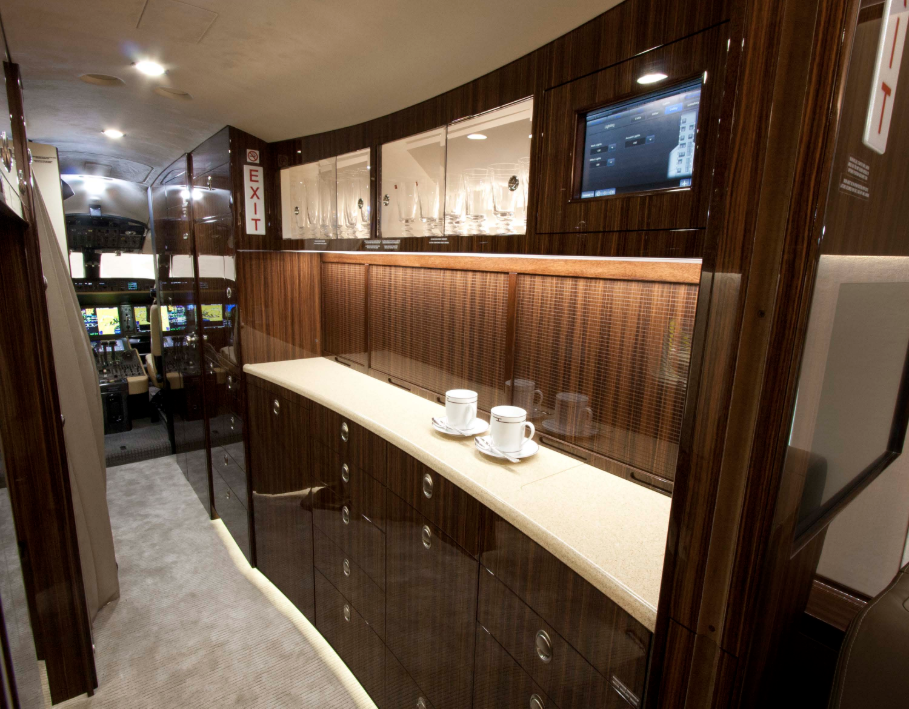
Evaluation
Operators usually give Bombardier the highest score for technical support, although some note that the Canadian manufacturer is inferior to Gulfstream in terms of ATI supply. However, there is some progress in this direction. Operators say that the glider itself, the green plane, and the Rolls-Royce BR710 systems and turbofan engines are very reliable and that the childhood illnesses of the first production aircraft are in the past. The survey on each system separately also did not reveal serious complaints. Some have called the variable frequency generator as a source of problems in the past, but Bombardier replaces problem blocks. Special mention - in a positive way - deserve wheel brakes as the most durable of all. In the end, the survey revealed a high degree of satisfaction for the operators of the Global 6000. With few exceptions, the operators expressed that their next long-range aircraft after the Global 6000 would also be Bombardier. It took Bombardier 15 years and three generations of the Global family to achieve this degree of customer loyalty. Now this investment pays off. The Global 6000 operators are among the most loyal manufacturers in the industry, and Bombardier will enjoy the results of its work for many years.